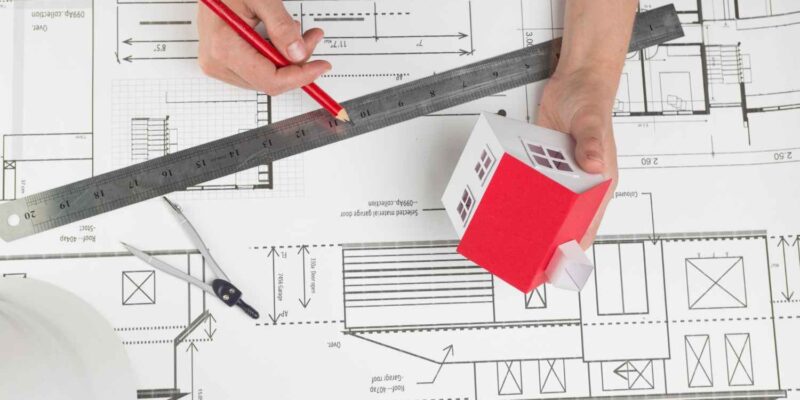Building measurements are an essential part of the design and construction process in the field of architecture. All buildings, be they small cottages or tall skyscrapers, start with exact measurements. It is the responsibility of architects to make sure that a building’s measurements, forms, and interior areas are accurately documented. We’ll examine the many techniques, resources, and factors architects use to measure buildings efficiently in this extensive guide. All right, let’s get started with architectural measurements.
The Role of Building Measurements in Architecture
Building measurements are the foundation upon which all architectural designs are built. The accuracy of these measurements has a profound impact on the entire construction process. Architects rely on precise measurements to:
Achieve Design Precision
Achieving design precision is a basic prerequisite for architecture. The architect uses precise measurements to make sure that every component of the building, including the doors, windows, stairways, and walls, fits together perfectly.
Stay within Budget
Building materials are costly, and wasted materials can quickly erode a project’s budget. Accurate measurements help architects calculate exactly how much material is required, minimizing waste and cost overruns.
Ensure Structural Integrity
A building’s safety and stability depend on accurate measurements. Architects must ensure that load-bearing elements like columns and beams are designed to handle the required loads without compromise.
Common Units of Measurement in Architecture
Units of measurement must be used with accuracy and consistency in the field of architecture. Architects typically work with feet, meters, or inches, though other regions may use different systems. Regardless of the system being used, consistency must be maintained throughout the project to prevent expensive errors.
Site Measurement Techniques
Overview of Techniques
Architects begin by measuring the entire site on which a building will be constructed. This includes understanding the topography, boundaries, and environmental factors that may impact the design and construction.
Tools and Equipment
Site measurements often require specialized tools like theodolites, total stations, and even drones to capture data accurately. The collected data forms the basis for the initial design and layout of the building.
Building Elevation Measurement
Methods for Measuring Building Height
Accurately determining a building’s height is essential to architectural design. It entails the use of both more sophisticated and conventional surveying methods, such as GPS and laser range finders, in addition to leveling.
Importance of Elevation Plans
Elevation plans and sections are integral to the design process. These drawings provide detailed information about the vertical dimensions and exterior appearance of the building.
Interior Space Measurement
Techniques for Measuring Interior Spaces
Accurate measurements are necessary for the interior layout of a building in order to guarantee that each room and space is used as intended. To get the measurements of every room, architects use a combination of digital tools, tape measures, and laser measurements.
Considerations for Irregularly Shaped Spaces
Not all buildings have perfectly rectangular rooms. In cases where spaces are irregularly shaped, architects must use creative measurement techniques and adapt their design accordingly.
3D Scanning and Digital Tools
Introduction to 3D Laser Scanning
The use of 3D laser scanning technology has revolutionized the way architects measure buildings. This technology enables architects to capture detailed 3D data quickly and accurately, making it an invaluable tool in modern architecture.
Advantages and Limitations
While 3D scanning and digital tools offer numerous advantages, they are not without limitations. Architects need to be aware of the strengths and weaknesses of these technologies to use them effectively.
Measurement Challenges and Solutions
When it comes to measuring buildings, architects frequently run into difficulties. These difficulties can include inaccurate site data that is currently available or unfavorable weather conditions during site surveys. Architects, however, are skilled at overcoming these obstacles to maintain the accuracy of measurements.
Legal and Regulatory Considerations
The architectural field is heavily regulated, and architects must adhere to building codes and zoning regulations. Accurate measurements are essential for compliance with these laws, as they impact the placement, size, and design of a building.
Conclusion
Preciseness is critical in the architectural field, and it all begins with precise measurements. Architects use a variety of methods to make sure that every detail is considered, whether it is in the elevation of a building, the design of interior spaces, or the application of state-of-the-art digital tools like 3D scanning. The role of Measure Up Corp. in providing measurement tools and solutions to architects cannot be overstated. By continually improving their measurement skills and staying updated with emerging technologies, architects can ensure that their designs are built on a rock-solid foundation of precise measurements.
By understanding the comprehensive guide to How Do Architects Measure Buildings? you’ve gained valuable insights into the meticulous process that underpins every architectural masterpiece. Accurate measurements are not just about numbers; they are the building blocks of our built environment, shaping the world we live in.

